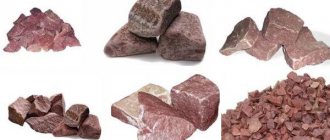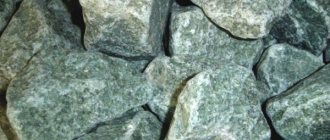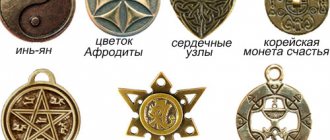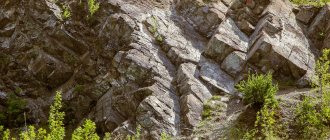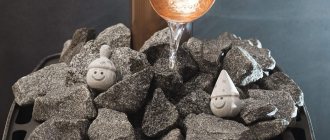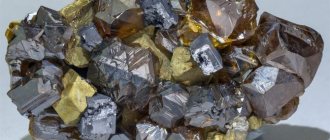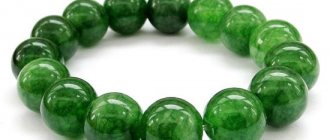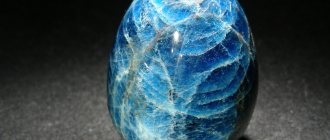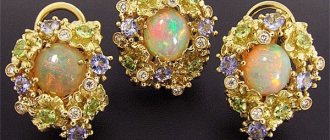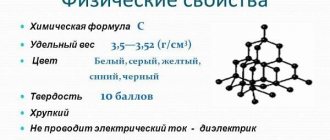/ List of stones / Properties of Raspberry Quartzite for baths
0
8767
Article rating
One of the most popular rocks used in the construction of baths, stoves and roofs is crimson quartzite. Since ancient times, the bathhouse was considered not only a place for pleasure. This invention of mankind has brought and continues to bring enormous benefits to human health. One of the main conditions for arranging a bathhouse is the competent choice of building stone. Crimson quartz, shoksha, also known as crimson quartzite for bathhouses, stoves, interior and exterior decoration of buildings - an ideal building material. Let's consider what properties it has and what benefits it brings to the whole body.
Raspberry quartzite
Why do you need a stone in a bathhouse?
First, let's look at the origin of the mineral. Crimson quartzite is a metamorphic rock that is considered the king's stone. It is formed from small granular particles of quartz, which provide its strength and hardness. The rock does not contain any impurities. The material consists of microscopic tightly fused quartz particles that form solid solid slabs. These are the main characteristics of the mineral. It is also important that the mountain stone is absolutely environmentally friendly.
Properties of the mineral:
- Raspberry quartzite for baths performs the most important function of storing heat in a room and releasing it. It is this ability of the rock that allows it to maintain a high temperature for several hours.
- The second property of the mineral is hardening at ultra-high temperatures and resistance to sudden temperature changes. Under the influence of high temperature and heat, crimson quartzite stone does not crack or split into particles. Magnetite rocks, which include the rock mineral, meet all safety requirements and are ideal for such buildings.
How to choose
It is impossible to completely exclude the purchase of low-quality crimson quartzite. However, it is possible to reduce the likelihood. You will need to be vigilant when purchasing.
What to pay attention to:
- availability of a manufacturer’s certificate with clear seals and clear wording;
- absence of external chips, cobwebs and single cracks, smooth edges;
- natural natural color without spots, synthetic brightness and faded pallor;
- a ringing sound when stones are tapped against each other or with a metal object.
Certified sellers often have special thermal chambers to demonstrate quality. They first heat the mineral to a high temperature, then immediately cool it. This testing reveals external and internal cracks almost instantly.
It is better to select quartzite piece by piece from the placer. In packaging, the risk of encountering defects is much higher.
Rules for choosing a quality mineral
Before starting to build a bathhouse, it is better to check the purchased building material for defects and reject stones that contain chips and cracks. One of the largest suppliers of the mineral is the company Leroy Merlin. On the company's website you can view the presented rock samples and place an order for their purchase.
Inspection of crimson quartzites for baths is carried out in profiling stores on site. Each element is tested - first it is heated under high temperature conditions, then cools down. Samples that are not chipped or cracked can be used for construction.
Quartzite differs from other rocks in its high cost and extraction method. For example, granite is mined naturally from the earth in blocks. Subsequently, it is sawn into pieces - slabs - and polished. Quartzite is made up of small grains of quartz and resin. This mixture is sintered, forming a slab of quartz agglomerate that is solid in structure.
Quartz is a little heavier than granite, making it more difficult to machine. Polishing of slabs should be done by a specialist.
Fact or fiction?
As soon as a bunch of enthusiastic reviews appear around a phenomenon, there are always those who question the legitimacy of this resonance. In the case of crimson quartzite, a similar situation is observed: people often note the very low quality of heat transfer from the stone placed on the stove, as well as its short service life - although, it would seem, everything should be quite the opposite.
This is not surprising: in the process of selecting quartzite, a lot of defective stones are missed, which are destroyed after just a couple of kindlings. Also, during the crushing process, invisible cracks may appear on individual fragments, which over time logically grow to larger ones. There is only one way to combat this - to purchase high-quality, well-selected crimson quartzite, which will not reveal all its beneficial properties in the bath, but will also last you longer than other rocks used.
It's easy to check: just hit it with a hammer. If the blow turns out loud, then you can be sure: you got an excellent sample!
As for the healing properties of quartzite, which are already legendary, it is not possible to find clear evidence for them in reality. Although after a series of bath procedures in the “company” of this stone, a person may well feel better and strengthen his immune system. However, is this the merit of quartzite?
In this regard, rumors about the effective treatment of erectile dysfunction in men look especially dubious.
Specifications
The stone is very practical
The description of natural material includes:
- fire resistance;
- durability, which is ensured by tightly intergrown quartz inclusions;
- resistance to mechanical damage;
- high water resistance;
- low degree of radioactivity;
- high degree of hardness;
- low thermal conductivity;
- resistance to external aggressive environments;
- retains its decorative effect for a long time;
- in terms of crushability and frost resistance - 1st class.
- the ability to maintain high temperatures for a long time.
Mineralogical natural bath material must be regularly checked for chips and cracks. The disadvantages of the material include the high probability of “crumbling” as a result of heating and polishing, which is typical for some samples of the mineral.
Chemical composition
This is almost pure quartz, the chemical composition of which includes: quartz (90-95%), finely dispersed oxides and hydroxides of iron (2-3%), finely dispersed sericite (4-8%), chalcedony and silicon (5%). Chemical formula: SiO2.
If this material has undergone proper processing and polishing, after transformation it remains unchanged for 300-400 years. Like sandstone, it does not lose its strength qualities as a result of exposure to acid and alkali.
The external properties of crimson quartzite are no less valuable. Processed and polished quartzite has high decorative qualities. Therefore, it is often used to decorate bathhouses, stoves and other buildings and objects.
Due to its high strength and hardness, this material is difficult to process. However, if the mineral is properly ground and polished, it will radiate its natural shine for several hundred years. These are the external properties of the material. How is it useful for the body? Let's find out right now.
Lifehacks from specialists
Bath attendants with extensive experience recommend taking into account the following operating nuances:
- Stones between 7 and 17 cm in size are best suited for an open fire.
- It is necessary to leave a small gap from the walls to the minerals in the furnace; it is advisable to place a stainless steel sheet on the bottom.
Elongated specimens are placed on the end, rather than placed vertically.- Large stones are laid down, smaller ones on top.
- It is important to pay attention to the recommended filling level of the oven as a percentage; the figure can be found in the device instructions.
- Before first use, quartzite should be washed in soapy or salt water, then in clean water, this will remove excess odors and dust.
- The stones in the stove must be replaced completely or partially every 5-6 years.
- In finishing, minerals should be wiped every 3-4 months using a mild detergent without alkali, acids or other substances that reduce shine.
- In electric ovens, stones of 6-8 cm produce better steam;
You also need to remember that when placing the stones in the oven, the stones must be dry; water is added after gradual heating.
The size of the rock is directly proportional to the volume of the heater; the smaller it is, the smaller the diameter of the stones should be. The ideal size for a bathhouse is boulders 5-20...
Beneficial features
According to doctors, this mineral is of great value to the human body. The healing properties of the stone are as follows:
- normalizes blood pressure;
- eliminates weakness, lethargy and other ailments caused by weather changes;
- eliminates pain in the lumbar region;
- improves blood composition and circulation;
- relieves muscle and joint pain;
- strengthens the immune system.
Therefore, crimson quartzite for baths: reviews about this mineral are only positive, and is the most suitable decorative and building material for public recreation areas.
Medicinal qualities
The healing properties of this amazing mineral were appreciated not only by lithotherapists, but also by representatives of official medicine. Doctors say that it helps normalize blood pressure and treat other cardiovascular diseases. It improves blood microcirculation, which is the prevention of dangerous diseases such as heart attack and stroke.
The stone helps people suffering from changes in weather and changes in atmospheric pressure: it helps improve their general condition, mood and drives away the blues.
For those who have problems with the lumbar spine (radiculitis, osteochondrosis, etc.), crimson quartz will become an indispensable assistant. You can apply heated pebbles, wrapped in thick cloth, to sore spots. The same applies to joint and muscle pain, especially when it comes to chronic inflammatory processes.
Types of stone
Bath stone
There are three types of mineral stone, depending on the minerals it contains:
- hornblende;
- pomegranate;
- mica.
The natural mineral is mined in slabs in Karelian quarries. These are the main rock deposits. Prototypes of the mineral are mined in other deposits.
Raspberry quartzite for baths and heaters is a rare and expensive material.
The color range of bath stones - crimson quartzite - is quite diverse. In nature you can find pink, yellow, brown, and even red quartzite. Rock containing impurities may have a blue or purple color. There are also black-brown samples that resemble granite (gabro diabase) or marble in appearance. The gray mineral is very similar in appearance to soapstone.
All these bath stones and crimson quartzite are expensive and very popular materials in construction. Multi-colored quartzite is particularly decorative and is used to decorate buildings both inside and outside. The main difference between these materials is their appearance and cost.
Story
Quartzite is one of the oldest materials used by people. The knives, scrapers, and arrowheads that modern archaeologists unearth are more than a thousand years old.
Later it became the basis of buildings, monuments, and roads.
The stone was equally revered by secular authorities and church hierarchs. The sarcophagus of Napoleon and the tomb of Russian Emperor Alexander II are made of quartzite. It is present in the design of the Lenin Mausoleum and the decor of the Church of the Savior on Spilled Blood in Moscow.
Magnetite thin-layered fine-grained jespellite quartzite (Annovsky quarry, Krivbass) in the museum of mining equipment of SevGOK.
Application
The rock mineral, like its other varieties, has found wide application in various fields of activity.
The environmentally friendly solid mineral is successfully used for:
- Construction of the foundation and arrangement of the thermal insulation layer in houses. Dense placement of the material provides good thermal insulation.
- For a bathhouse, the most valuable material is tumbled quartzite that has been polished.
- Stones of various shapes are used for arranging stoves and roofing - tumbled stone, crushed stone.
- For interior and exterior decoration.
- Quartzite is used as a filter for water purification.
- Laying the top layers of highways and roads.
- Crushed stone, facing slabs, rubble stone and bars are made from rock.
- There is no better stone for making kitchen countertops. And all thanks to its environmental friendliness, durability and high decorative qualities.
Conveniently, during processing, the mineral for the bath does not generate dust, and its water-repellent ability allows you to work with the material in any weather.
Ferrous and iron ore stones were used by our ancestors to make tools. Archaeologists have found several such objects from that time. During excavations in Mesopotamia, scientists managed to unearth an ancient stone jewelry that was 7 thousand years old.
Quartzite is widely used in jewelry making. Rose quartz is of particular value. Its price is equal to the cost of precious stones - diamonds or sapphires. You can often see products that combine gold with rose quartz. And such luxury jewelry items are not cheap - sometimes even more expensive than gold jewelry with diamonds.
Material
The mineral is a natural natural stone. It is characterized by a quartz homogeneous composition. Often mined in Karelia. It was used to decorate significant architectural buildings (in St. Petersburg it was used to decorate St. Isaac's Cathedral, or rather its altar, the Kazan Cathedral, and the Winter Palace). This environmentally friendly and beautiful material with excellent physical and mechanical properties can be used for stoves in baths and saunas.
Distinctive features of the mineral:
- has a low water absorption rate;
- has high strength;
- durable;
- has low abrasion.
